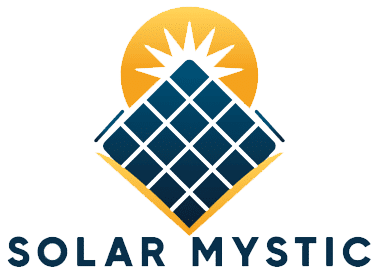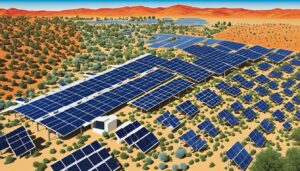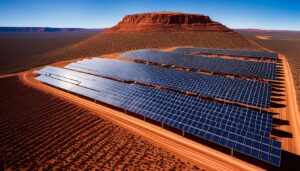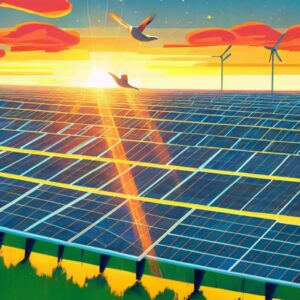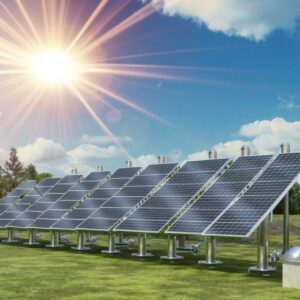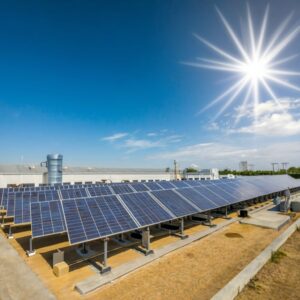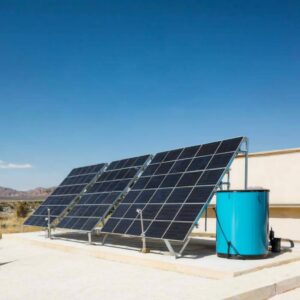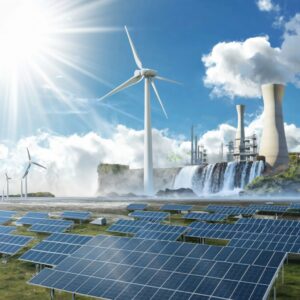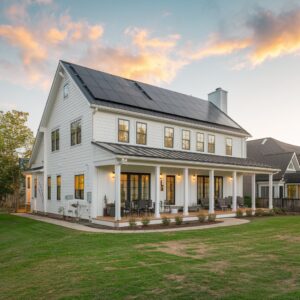
The world is in a race against time to shift from greenhouse gas producing energy sources to carbon-free ones, such as nuclear plants, hydroelectric power, and solar and wind farms. Solar developers play a crucial role in shaping the future of clean energy. In the United States, the demand for solar developers is growing as the country aims to transition to renewable energy sources. As the solar industry continues to expand, becoming a solar developer can lead to a rewarding career in the clean energy sector. It offers the opportunity to contribute to the global shift towards a more sustainable and environmentally friendly energy grid.
Key Takeaways:
- Solar developers are essential for the transition to renewable energy sources.
- The demand for solar developers is increasing as the solar industry expands.
- Becoming a solar developer offers a rewarding career in the clean energy sector.
- Solar developers contribute to the global shift towards a more sustainable energy grid.
- Joining the clean energy sector allows individuals to shape the future of renewable energy.
Common Misconceptions About Solar Farms
As the world increasingly embraces renewable energy sources, solar farms have emerged as a popular choice for generating clean electricity. However, there are several common misconceptions surrounding solar farms that hinder their development and implementation. Let’s debunk some of these misconceptions and shed light on the true potential of solar farms.
Myth: Wind turbines and solar panels negatively impact bird and bat populations
While it is true that wind turbines can cause bird and bat fatalities, the number of deaths is relatively low compared to other human-made structures. Research shows that buildings and domestic cats pose a greater threat to bird and bat conservation than wind turbines and solar panels. In fact, many solar farms take measures to mitigate the impact on local wildlife, such as implementing bird-safe designs and using ultrasonic deterrents.
Myth: Power produced by wind and solar farms is solely exported, without benefiting the local community
Contrary to popular belief, solar farms can bring significant economic benefits to the communities where they are located. These benefits include job creation, increased tax revenue, and local investments. Moreover, solar farms contribute to the overall stability of the power grid by diversifying the sources of electricity and reducing dependence on fossil fuels. This helps to ensure a reliable and sustainable power distribution system for both local residents and neighboring areas.
Myth: Solar panel waste contains toxic materials, posing environmental risks
While solar panels do contain certain materials that require proper handling at the end of their lifespan, such as lead and cadmium, the overall environmental impact is minimal when compared to other forms of waste. The solar industry has been actively working on responsible end-of-life management strategies, including recycling and disposal programs, to minimize the potential risks associated with solar panel waste. As technology advances, companies are also exploring ways to design more eco-friendly and sustainable solar panels.
To summarize, it is important to separate fact from fiction when it comes to solar farms. These renewable energy systems not only help combat climate change and reduce greenhouse gas emissions but also bring tangible benefits to local communities. By dispelling these misconceptions, we can foster a better understanding and appreciation for the role of solar farms in achieving a cleaner and more sustainable future.
| Misconception | Fact |
|---|---|
| Wind turbines and solar panels harm bird and bat populations | The impact is relatively low compared to other structures |
| Power from solar farms is solely exported | Solar farms bring economic benefits to local communities |
| Solar panel waste contains toxic materials | Efforts are made to responsibly manage and recycle solar panels |
The Future of Space Solar Power
The concept of space solar power has gained significant attention from research teams worldwide, including those hailing from the United States, China, and the UK. This innovative approach offers the potential for 24/7 solar energy generation at a multi-gigawatt scale, making it a promising solution for both military and civilian applications.
To enhance the viability and cost-effectiveness of space solar power, researchers are exploring cutting-edge technologies such as gigascale antenna arrays. These advanced arrays enable efficient collection and transmission of solar energy from space to Earth, maximizing the utilization of renewable resources and addressing the growing energy demand.
Furthermore, in-space fabrication is another breakthrough technology being investigated to optimize space solar power systems. By manufacturing components directly in space, we can avoid the challenges and costs associated with launching massive structures from Earth. This approach has the potential to revolutionize the construction of space-based solar power platforms and significantly reduce deployment timelines.
The future of space solar power holds immense promise for advancing renewable energy transmission on a global scale. As research and development in this field continue, we expect to witness groundbreaking innovations that will accelerate the adoption of space solar power, foster collaboration among nations, and contribute to a more sustainable and energy-efficient future.
FAQ
What is a solar developer?
A solar developer is a professional who plays a crucial role in shaping the future of clean energy. They are responsible for developing, designing, and overseeing the construction of solar energy projects, such as solar farms and rooftop solar installations.
What does a solar developer do?
A solar developer is involved in every stage of a solar energy project. They identify suitable locations for solar installations, secure permits and land leases, conduct feasibility studies, design system layouts, manage project budgets and timelines, and collaborate with various stakeholders, including engineers, contractors, and utility companies.
How can I become a solar developer?
To become a solar developer, you typically need a bachelor’s degree in a relevant field, such as engineering or renewable energy. It is also beneficial to gain experience in project management, site assessment, and renewable energy policy. Networking with professionals in the industry and obtaining certifications, such as the NABCEP PV Installation Professional Certification, can enhance your prospects in the field.
Do wind turbines and solar panels harm bird and bat populations?
While wind turbines and solar panels can pose risks to bird and bat populations, the overall impact is relatively low compared to other factors. Studies have shown that buildings and domestic cats are responsible for significantly more bird and bat fatalities than wind turbines or solar farms. Developers take measures to minimize wildlife disturbances and collaborate with conservation organizations to ensure responsible development.
Do solar farms benefit local communities?
Yes, solar farms can bring economic benefits to the communities where they are built. They create job opportunities during the construction and operation phases, contribute to local tax revenue, and often involve community engagement and education programs. Additionally, solar farms help reduce greenhouse gas emissions, improve air quality, and contribute to a more sustainable and resilient energy grid.
What is space solar power?
Space solar power is a concept that involves capturing solar energy in outer space and transmitting it to Earth for use. It offers the potential for continuous solar energy generation at a large scale, making it beneficial for both military and civilian applications. Research teams from various countries are exploring innovative technologies, such as gigascale antenna arrays and in-space fabrication, to make space solar power more feasible and cost-effective.
